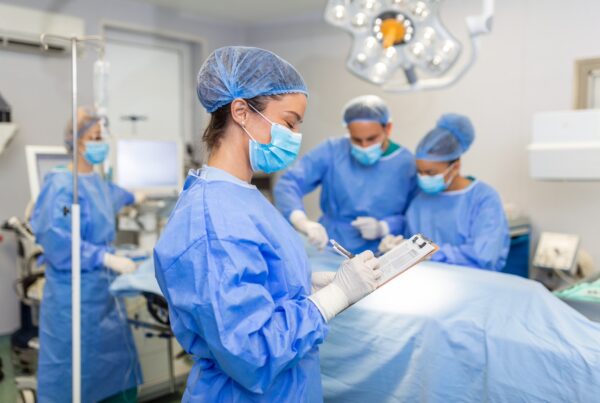
Do you remember the telephone game you played as a child? The one where you tried to pass a message along from person to person to see if you could keep the message intact all the way to the end of the chain. It was always fun to see how the original message was completely jumbled by the time it reached the last person. The problem is telephone is not just a children’s game, it’s also a problem we have to grapple with in the adult world. In the high pressure environment of a hospital OR, telephone-style miscommunications and misunderstandings can lead to dire consequences.
When working in your respective department, you often learn to speak the language of those around you to avoid mistakes and increase efficiency. However, when trying to collaborate and communicate with another department, say OR to SPD, you need to learn to speak their language as well. Lack of good communication between the OR and the Sterile Processing Department can lead to frustration, and more importantly to poor quality of care and adverse patient outcomes. Patient safety experts have found that poor communication puts both patient and hospital in jeopardy. http://www.healthcarebusinesstech.com/communication-patient-harm/
The OR is the largest supplier of raw goods to the Sterile Processing Department, and the OR is Sterile Processing’s largest customer. Without close collaboration it is easy to fall into an “accuse, blame and criticize” mentality, eroding morale and pitting the two departments against each other. The OR needs proper, sterilized instrumentation ready to go for each case and the Sterile Processing Department needs to understand what is expected of them in order to provide that level of service.
Poor communication and collaboration can also lead to a high turnover rate in the Sterile Processing Department because no one wants to guess what is expected of them at work. If you address the communication issues and have everyone referencing everyone referencing the mutually agreed upon set of requirements, you can achieve a harmonious and efficient working environment for both departments, leading to higher recruitment and retention.
So How Do You Achieve This Solution?
A great way to ensure that everyone is speaking each other’s language is by developing an intradepartmental Collaborative Practice Council, made up of front line technical and nursing staff. Ideally, surgeons should be involved whenever possible, at least on an ad-hoc or consultative basis so they can add their level of expertise and expectations to avoid issues down the line.
Time should be dedicated to developing a robust team charter to ensure buy-in and the team should meet on a regular basis, at least monthly.
As these relationships develop and the team matures, greater understanding of the role and functions of each department will result. This will lead to better functioning SPD technicians as they learn how the instruments are used and the OR staff will have more insight as to what they can do to ensure the equipment is returned to SPD ready to be processed.
Talking the Talk:
With everyone speaking the same language and understanding the expectations, communication, efficiency and outcomes will significantly improve. You will have staff members of each department performing optimally and helping each other achieve goals rather than passing on garbled messages that cause confusion and mistakes.
Subscribe to our blog to ensure you don’t miss out on our next SPD improvement tactic and future perioperative performance improvement solutions. You may also contact us anytime at info@surgicaldirections.com for more information on this and other OR efficiency enhancement ideas.



